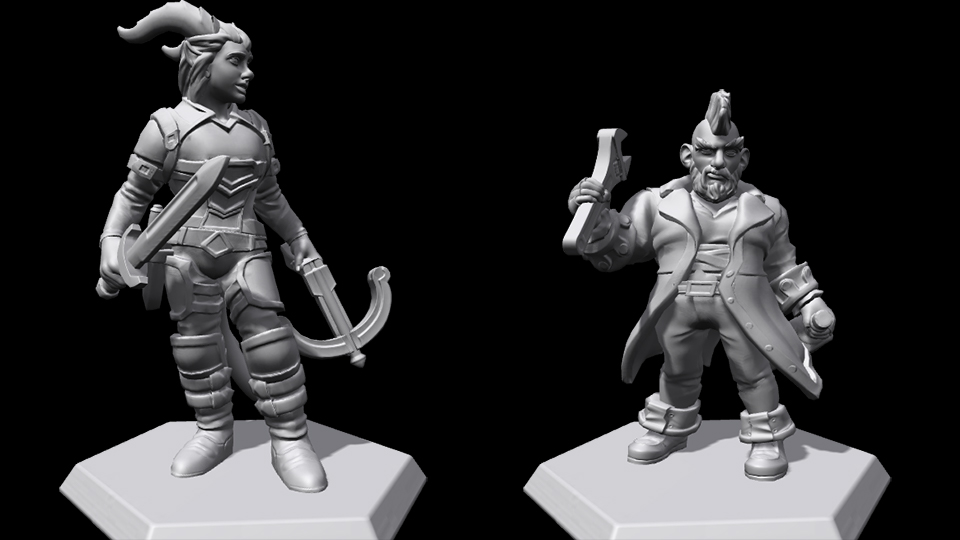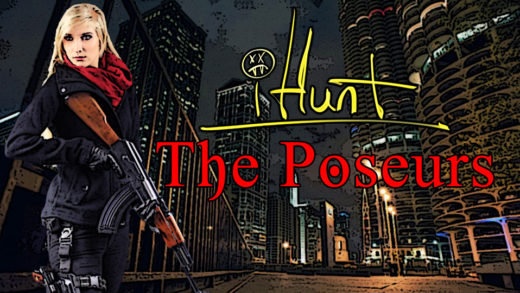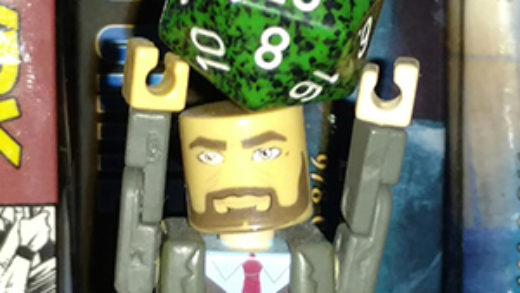
In late August 2016 I began exploring the world of custom 3D-printed miniatures, via the service known as Hero Forge. Early in the year my group had begun a game of Pathfinder and it had been years since I delved into classic dungeon-delving PnP RPG. Even though we played online, I was really into the spirit of reviving a more youthful spirit of play, so began looking for a miniature to that would fit my Tiefling thief, Vaya Phaedras. It didn’t help that I had also begun a re-read of the the comic “Knights of the Dinner Table,” and was reading about Bob’s hunt for a specific miniature that looked just like his character. It all came together when, in my search, I found Hero Forge, where users could make selections to “craft” their figure.
With Hero Forge’s software, a user pieces together their desired miniature using a menus including Race, Head, Body, Clothing, Items, Base, Pose, and Mount. It’s also possible to filter by genre, if one is daunted by the overall amount of options. And, my giddy aunt, there are a number of options. When I first started examining the site, I thought this would be a character creator much like many MMOs, where variety came in minor face or hair selections. No, this was more like the ultimate dollhouse MMOs, where each submenu could be tweaked toward full character visualization in 3D format.
For example: A selection menu under “Head” is “Expression.” While the site allows for some default expressions, such as “Cocky,” a series of sliders is laid out below for a variety of mixed emotions. So, by using the sliders of “Smile,” “Cocky,” “Snarl,” “Confused,” and “AAAARRRGGGGHH!!!” a very unique expression can be generated for the figure.
One of the better features of Hero Forge is that, if signed in, a user can save their character. Not only does this serve as a method of always have a visual of what one ordered, but it can also be used to have work-in-progress builds. The site also provides full rotation of the character builds, as well as the ability to screenshot the figure as a png, or even share the build with others, even before the figure was ordered. When I decided to use Hero Forge for my Pathfinder character I thought I might as well also create a figure for my long-running Shadowrun 4e character, the Dwarven rigger Gyre “Gears” McGimble. When I decide to do something, I jump in with both feet. So, I’m able to share the builds for Vaya Phaedras and Gyre “Gears” McGimble.
Once the builds are complete, shared with friends (or possible painters), and the decision has been made to actually put some money down, the final menu of “Material” comes into play. Within this menu one selects desired size and material. A red d20 stands to the left of the character, helping to establish a scale between “30mm Tabletop Scale,” “2x Scale Statuette,” and “4x Scale Statuette.” The figures can be printed in “Nylon Plastic,” “Premium Plastic,” “Steel,” or “Bronze.” (Though some 3D printers can print meat sculptures, this option is not available from Hero Forge.) Additionally, below the size and material selections, a brief write-up of the material selections is present, changing when one selects a different option; this was somewhat handy for a neophyte like me as the write-up for materials also contains a 5-point score for detail, durability, and paintability. As I had not used Hero Forge or any sort of 3D printing before, I went with the cheapest options and ordered my 2 figures in 30mm nylon plastic ($14.99 each, plus shipping).
Prices can jump drastically when changing material options. While 30mm nylon and premium plastic figures have about a $15 price difference ($14.99 vs $29.99, respectively), a 4x scale statuette will cost a buyer $219.99. So, when ordering, it’s important to watch that “Add to Cart” button, unless money is no object. Materials are also more limited the larger the figure. 2x scale is only available in the cheaper nylon plastic or steel, and 4x scale removes even that second choice. This is largely due to the way each material is used in printing, and how imperfections with other materials can be far more noticeable the larger the figure. That said, I do hope additional plastics can be offered for greater scales in the future.
Once actually ordering, it appeared that Hero Forge is basically a way to generate designs and automatically submit them through 3D printing house Shapeways. This is not a bad thing at all. I’d previously ordered some 3D FATE dice via Shapeways and not only does Hero Forge’s menu allow for customization not allowed through Shapeways, the latter site is much like Etsy–a deluge of good, ok, and bad all at once. For $5 standard shipping (included both miniatures), I had my 2 figures created and delivered in about 20 days.
I’ve helped friends paint Warhammer 40k miniatures in my past, and I had painted a few figures for my AD&D characters. But I was never very good at it. I lacked patience, practice, and a steady hand in my youth. Now, in my 40’s, I also lacked time. But even with a low paint-ability score for the nylon plastic material, I knew I would want to see my tiny figures in color. So, it was time to scour the Internet and do what I do best: pay someone else to do it for me. Next week: Finding and hiring a painter!


Recent Comments